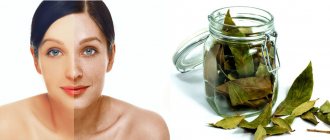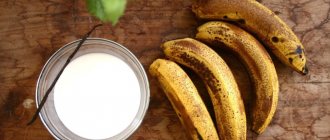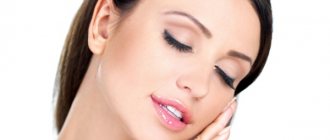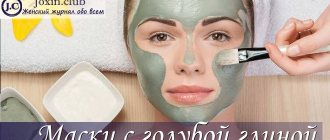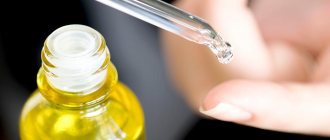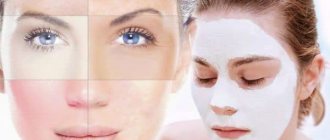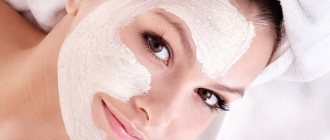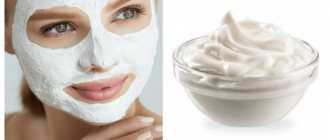A gala ball was held in a large fairy-tale palace. White Clay, a fairy-tale European princess, proud and unapproachable, was invited to it. There was a coolness in her gaze. Everyone looked at her in admiration, but did not dare approach her.
Photo by Polina Kovaleva: Pexels
At the other end of the hall, the Chinese beauty Red Clay appeared. Hot and capricious, like fire. So they stood at different ends of the ballroom: both beautiful, but unattainable. The Wind flew past, saw the princesses and whirled them around in a frantic rhythm.
Soaring and blazing, white and red clothes mixed, the images merged together, and a beautiful girl, pink as the morning dawn, appeared in the swirling whirlwind. Warm and affectionate, with a gentle smile on her lips... Such a legend was born in my imagination when I was studying the properties of pink clay.
It is, indeed, obtained by mixing two varieties: red and white. The result is a substance with unique properties, popular in cosmetology. Its versatility lies in the fact that it is suitable for all skin types, be it dry, oily or combination.
In this article:
Properties and compositionHow it worksMasks with pink clayPopular recipes
Preparation begins one day before the procedure
For a tightening or moisturizing mask, the face should be cleansed with a scrub. You can use a store-bought scrub or soft peeling, or go to a salon for a procedure; prepare a homemade scrub using coffee, oatmeal, or other available ingredients. Keep in mind that you cannot scrub your skin on the day of applying the mask, as you may damage it unnecessarily.
If the mask is cleansing or contains abrasive components, preliminary cleaning is not required.
Important! After deep cosmetic peeling or mechanical cleansing procedures, you can make clay masks no earlier than 2 weeks later.
Washing before application
It is advisable to select cleansers according to your skin type; you can use washing gels, foam or milk. Next, you should steam your face, then gently pat dry with a towel.
Now the skin is completely ready, the mask will be very effective. Although clay is universal, you should select your own mask recipe for each skin type.
Whitening masks
Expert opinion
VERY HELPFUL!
Among the advantages of pink clay is its ability to lighten age spots. When components with similar characteristics are added to masks, the effectiveness significantly increases. The recommended time for keeping the prepared mask on the face is 20 minutes.
Some samples of masks:
- Cucumber
Peel a fresh cucumber. Grind using a fine grater. Squeeze out the juice through a gauze cloth folded in half. Dilute a tablespoon of clay powder with it to obtain a mixture identical in thickness to sour cream.
- Chamomile with essential citrus oil
Boil dry chamomile - ½ tsp, poured in 50 ml of water, for five minutes. Leave under a napkin until it cools. The required amount of clay powder is diluted with a filtered decoction, adding 3 drops of grapefruit, orange or lemon ether.
- Aspirin
Recipes
For oily skin
To prepare a mask, you can use decoctions of nettle, chamomile, St. John's wort, rose hips, and sage; Kefir is also good for such a mask. It is necessary to dilute the clay powder with a decoction at the rate of 1 to 2. It is recommended to use this mask twice a week for 20 minutes. Afterwards, the skin must be moisturized with cream.
For dry skin
Pink clay itself is an excellent moisturizer, so masks for dry skin do not require additional components; just dilute it with plain water. If the skin is chapped or dehydrated, the following recipes are suitable:
- Dissolve the clay powder with milk, always fresh, in a ratio of 1:2;
- Add to 1 tbsp. clay 1/2 tsp. honey and olive oil. Dilute with mineral water until the desired consistency is obtained.
For normal skin
A mask for normal skin also does not require additional ingredients. To prevent dryness in cold seasons, it is enough to add half a teaspoon to the mask. honey
For wrinkles
The following recipes are suitable for rejuvenating and smoothing out wrinkles:
- Mix 1 tbsp. clay and olive oil, add 1 tsp. honey, half a teaspoon of carrot juice, 2 tsp. mineral water.
- Mix clay and egg white in equal quantities and dilute with mineral water.
Apply twice a week for 15 minutes.
Anti acne
To eliminate acne: dilute 2 tbsp. clay with aloe juice to a creamy consistency. It is necessary to wash off after 15 minutes.
Do it 2 times a week.
For inflamed skin
1 tbsp. mix clay with 1 tsp. jojoba oil, add 3 drops of chamomile oil. Dilute with clean drinking water to a creamy paste, apply, rinse after 15 minutes.
This mask perfectly eliminates inflammation and irritation.
For problem skin
For problem skin, masks containing decoctions of celandine, calendula, string and St. John's wort are useful. In addition, there are several more proven recipes:
- Dilute the clay with mineral water, add 4 drops of eucalyptus oil and 6 drops of lemon juice.
- Same as in the first recipe, but replace lemon juice with 1 tsp. vodka.
Make masks every 3-4 days for 20 minutes.
To tighten pores
To deeply cleanse oily skin and tighten pores, mix 1 tbsp. clay and lemon juice, add 2-3 drops of rosemary oil and 1 tbsp. beaten egg white. Keep the mask on for 10 minutes.
Whitening
Pink clay itself has a whitening effect, so it can be used without additives. You can speed up the process a little by diluting the clay with fresh cucumber juice. You can also mix clay and chamomile decoction (equal proportions), add 3 drops of grapefruit or lemon oil. It is enough to make a mask once a week for 20 minutes.
Rejuvenating
To achieve the rejuvenation effect, masks must be performed in a course - once a week, for 6 weeks.
Mask for normal and oily skin:
- 3 tbsp. dilute the clay with water to a creamy consistency;
- Add 4 crushed aspirin tablets, mix well;
- Apply to skin and leave for 15 minutes;
- Rinse off with cool water.
For all skin types: 1 tbsp. clay add 3 tbsp. l. water, 1 tsp. glycerin, a drop of bitter orange oil and a couple of drops of sweet orange. Leave the mask for 5 minutes, apply to the face for 15 minutes, rinse.
Recipes with various ingredients
Sometimes it is difficult to find the right ingredients for a mask, but there are such a variety of recipes that you can easily find the right one for home preparation.
With honey and milk
Pink clay masks with the addition of honey nourish, moisturize and rejuvenate the skin. But honey is a strong allergen, so it is not recommended for allergy sufferers.
- for 1 tbsp. Dilute the clay with water to a paste consistency, add a couple of tsp. honey Keep on face for no more than 15 minutes.
- Skin hydration:
- 4 tsp dilute clay in 3 tbsp. warm milk;
- Add 1 tsp. honey, stir;
- Apply to face, neck and décolleté;
- Hold for 15 minutes;
- Rinse with warm water and apply nourishing cream.
With carrot juice
A mask with the addition of carrot juice will give your skin a radiant and well-groomed appearance. To do this, you need to mix clay, freshly squeezed juice, honey and olive oil in equal proportions. Apply to pre-steamed face for 15-20 minutes. Wash off the mask with warm water and moisturize your face with cream.
Important! Carrot juice has coloring properties, so it is not recommended to use it in large quantities on fair skin.
With olive oil
Olive oil is good for moisturizing dry skin. In 1 tbsp. clay powder add 1 tsp. olive oil, 1/2 tsp. honey and 1/2 tbsp. mineral water without gas. Keep on face for 8-10 minutes.
With mineral water
Mineral water does a good job of moisturizing the skin and saturating it with useful minerals. 1 tbsp. clay diluted with 3 tbsp. mineral water, mix until smooth, add egg white, mix again and apply to face for 20 minutes. This mask has an additional lifting effect.
With chamomile decoction
An excellent recipe for a soothing and restorative mask:
1 tbsp. mix clay with 3 tbsp. chamomile decoction, 1 tsp. jojoba oil and two drops of chamomile oil. Hold for 10 minutes.
With cucumber juice
In 2 tbsp. clay add 1/2 tbsp water, the same amount of cucumber juice. Add a couple drops of lemon juice and olive oil. Apply for 15 minutes. This mask perfectly moisturizes and whitens.
With lemon juice
Lemon juice can effectively remove acne marks. 1 tbsp. dilute the clay with lemon juice (freshly squeezed) to a thick paste. Add a couple of drops of rosemary oil, apply to face with patting movements, and after 10 minutes rinse with warm water.
With rosemary oil
You can use rosemary to tighten pores. 1 tbsp. mix clay with 1 tsp. lemon juice, add 3 drops of rosemary oil. Apply to face, rinse with cold water after 10 minutes.
With jojoba oil
This mask is good for sensitive and dry skin. 1 tbsp. clay dilute 3 tbsp. clean water, add 1 tsp. jojoba oil and a couple of drops of chamomile and rose oils.
Keep on face for 15 minutes, then apply moisturizer.
With tea tree oil
An effective mask to combat wrinkles: mix equal amounts of clay and water, add 3 drops of tea tree oil, keep on face for 15 minutes.
With a series
A mask made of pink clay with a decoction of string will do a good job of treating acne. The mixture is diluted to the consistency of sour cream.
With calendula and celandine
Mix dry herbs of celandine and calendula (a teaspoon each), steam in 100 ml of boiling water, leave for 5 minutes, and add clay until a creamy slurry is obtained. This mask nourishes the skin very well and is also suitable for problem skin.
With St. John's wort
For oily skin and eliminating excess shine, use a mask made from clay diluted with a decoction of St. John's wort.
With nettles
2 tbsp. Infuse nettles with boiling water (1 cup) for 20 minutes, then strain and add 5 tbsp. clay and 2 drops each of mint, lavender and tea tree oils. An excellent mask for adding elasticity to the skin.
With sage
Mask against acne and skin rashes: 1 tbsp. clay is diluted with green tea (freshly brewed) to a paste consistency, 17 drops of grape oil and 6 drops of sage oil are added. After 20 minutes, wash off first with warm, then cold water.
With rose hips
Age mask with a rejuvenating effect. 1 tbsp. clay and tsp. mix cocoa with 60 ml of rose water, add 1 tsp. rosehip oil Wash off after 10 minutes.
With kefir
Mix 1 tbsp. clay with 1 tsp. kefir Leave for 15 minutes, then wash alternately with warm and cold water. This mask will eliminate excess oily shine.
With sour cream
The mask moisturizes the skin very well and fights wrinkles. Mix clay and sour cream (4 tsp each), add 2 drops of citrus and vegetable oil. Mix well and apply for 25 minutes.
With aloe
If you add to 2 tbsp. clay and aloe juice to a creamy consistency, you will get an excellent mask for fighting comedones. It can be applied to the entire face or to individual areas.
It is advisable to keep the mask on for no more than 15 minutes.
With cottage cheese
Nourishing mask: mix milk and pink clay in equal proportions, add 1 tbsp. cottage cheese and 1/2 tbsp. honey After 15 minutes, rinse with cold water.
With apple and yolk
Rejuvenating mask with apple: grind half a medium apple into a paste, add the already mixed yolk and 1 tbsp. clay. If the skin is dry, you can add a couple of drops of vegetable oil. After 20 minutes, rinse and wipe your face with a couple of drops of tea tree oil.
With peach oil
Softening mask: dilute the clay with chamomile infusion, add 2 drops of peach oil, apply for 15 minutes, rinse with warm water.
With citrus juice
Cleansing mask: mix 1 tbsp. clay and 1 tsp. freshly squeezed citrus juice, add 2 drops of tea tree oil. Wash off after 10-15 minutes.
Main advantages of the powder
What effect does pink clay have on facial skin? In a word - positive, and in more detail, its favorable aspects lie in the following:
- Reduces irritation and inflammation on the skin from acne;
- Improves the elasticity of the epidermis and cellular renewal;
- Gently exfoliates the skin, leaving it silky and smooth;
- Helps minimize the appearance of acne;
- Promotes a radiant and even complexion;
- Does not take moisture from the skin, does not make it dry and dull;
- Nourishes and moisturizes the skin of the face;
- Perfectly removes impurities from the dermis;
- Has calming and balancing properties;
- Thanks to antioxidants, it slows down the aging process;
- Stimulates rapid skin regeneration;
- Has a tonic and refreshing effect.
This is actually why pink powder is so loved by the fair sex, but if you combine it with other natural ingredients, its effect is enhanced significantly.
Tips for use
To get the maximum benefit from using pink clay masks, you must not only properly prepare the skin and select ingredients, but also follow a number of important tips:
- The mask should be applied to the skin in a fairly dense layer;
- It is not recommended to apply the mask around the eyes, as the skin there is most delicate;
- It is best to dilute clay with cool and clean water;
- Stir the prepared mixture until it has a homogeneous, lump-free consistency;
- Towards the end of the procedure, you can sprinkle the mask with water to better cleanse the skin;
- After the mask, the skin should always be moisturized or nourished (depending on the type).
Who is pink clay for?
Many girls and women do not use clay in their care because they are simply afraid that it will dry out their already thin and dehydrated dermis. But with pink clay you can forget about such problems, because it has a completely different effect, unlike green and blue.
Cosmetologists recommend pink clay to those who have:
- mature, aging skin with signs of aging in the form of a network of wrinkles;
- problematic epidermis, prone to the appearance of pimples, acne and other various rashes on the face;
- delicate and sensitive dermis, which often exhibits allergic reactions, redness and irritation;
- sun marks such as freckles or age spots.
From this we can conclude that pink clay is suitable for everyone, saving both teenagers and older women. Well, most importantly, it can be used on sensitive skin, which is so difficult to choose skincare products.
Who is it not suitable for?
Reviews of pink clay
only positive ones. But there are still some limitations under which it is not recommended:
- There is an individual intolerance to this component;
- Diseases of the cardiovascular system;
- Difficulties in the functioning of the thyroid gland, its disorders;
- Open and wet wounds, ulcers;
- Tuberculosis and cancer.
You should not violate contraindications, so as not to get even bigger health problems.
A unique composition is the key to a clear and predictable result
The saturation of the chemical composition with ingredients beneficial to the body, microelements, and bioactive substances allows clay to exhibit healing properties.
The use of the product gives good results in the treatment of dermatological diseases (eczema, psoriasis, warts, acne, erysipelas, allergies). The effect of medical procedures is permanent, and not short-term, as is often the case with cheap cosmetics “stuffed” with harmful chemicals.
Pink clay is a good antiseptic, normalizes the secretion of sebum, eliminates shine, quickly extinguishes local inflammation on the face, shrinks pores and does not give acne the slightest chance. It copes well with increased redness of the face, is used to treat scars from acne and acne, promotes their resorption, and removes infiltrates. Even in ancient Rome, various types of clay were used to treat diseases, using them externally and also internally. Today, clay is included in ointments for acne, remedies against poisoning, diarrhea, and is used in the treatment of the spine and joints, gynecological diseases, endocrine and nervous disorders, intestinal and stomach diseases.
How to cook properly
In the process of preparing clay masks, it is important to adhere to certain rules so that the finished product has the most effective effect:
- Dilute the powder exclusively with distilled or filtered water. Never use regular tap water. You can also add freshly prepared herbal infusions or natural hydrolates.
- Mix the clay in a non-metallic container using plastic or glass mixing tools. When interacting with metal, the clay mixture oxidizes, as a result of which the applied mask will only harm your facial skin.
- Mix the ingredients thoroughly so that the finished mass has a uniform texture without any lumps.
